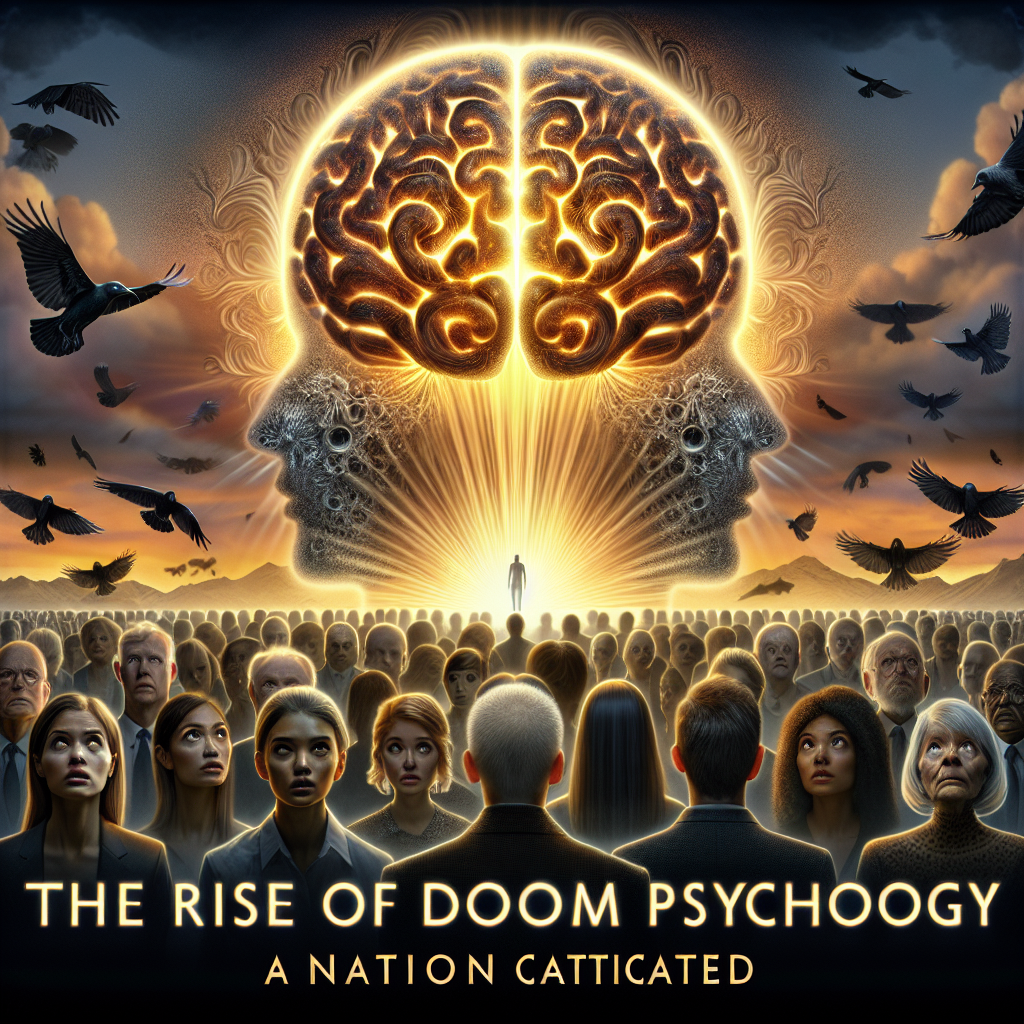In today’s society, there seems to be a growing undercurrent of despair and reckless behavior, stemming from a collective sense of doom, as pointed out by George Eliot in his profound quote on the nature of evil. Observations of excessive risk-taking, both on the roads and in economic activities, signal a troubling mindset among individuals. Recent incidents of extreme reckless driving — such as high-speed maneuvers, road rage involving weapons, and a noticeable uptick in traffic fatalities — reflect a broader societal malaise. These behaviors may be symptomatic of a mental state where individuals, either overwhelmed by anxiety or a sense of inevitable decline, engage in dangerous acts, potentially as a misguided attempt to assert control over their lives.
The hypothesis that a “fatalistic doom psychology” is influencing such reckless behavior may have merit. Beyond mere speculation, individuals’ actions might be driven by the pressures of modern life, where the burdens of economic instability and public health crises converge. The pandemic’s effects, along with resultant societal changes, could heighten feelings of urgency. Some observers even suggest psychological impacts from COVID-19 vaccinations may contribute to this increased recklessness, leading individuals to live for the moment in the face of uncertainty about their health and future. As evidence of such behaviors rises, there is a need for deeper psychological and sociological examination to understand these trends.
Moreover, economics extends beyond the mere observation of reckless driving; “doom spending” is emerging as an alarming trend. Fueled by an economy in turmoil, individuals are increasingly making impulsive purchases in a desperate attempt to seek joy or solace amid their anxieties about financial futures. This phenomenon can be linked to sustained high inflation, exacerbated by governmental spending and policies seen as irresponsible. Average Americans continue to experience dwindling real wages juxtaposed with soaring living costs, resulting in a sense of hopelessness. In stark contrast, the wealthiest classes thrive under the financial policies that keep interest rates artificially low, widening the chasm between the rich and poor and creating an environment ripe for despair-induced spending.
Doom spending is, therefore, a response to the normalization of financial struggles, where individuals feel compelled to spend what they cannot afford as a self-calibrated mechanism for coping with the reality of their situations. This phenomenon aligns with the practices endorsed by economic systems that prioritize short-term gains and consumerism over long-term sustainability, creating a façade of economic stability despite the inherent challenges faced by the average populace. Reports of positive GDP numbers, while surface-level indicators of economic health, fail to reflect the true plight of millions, as government statistics do not account for the financial realities that many citizens encounter on a daily basis.
The danger of this doom psychology is its potential to manifest in genuine catastrophe. Should defaults on debts begin to proliferate among individuals, corporations, and even at the governmental level, the consequences could be dire, leading to financial collapse. The current trajectory suggests a system where politicians and financial elites are unlikely to concede their positions of power or address systemic shortcomings. As the deleterious effects of economic strategies become increasingly pronounced, it is essential for citizens to recognize the possible consequences of their spending behaviors and acknowledge the deeper issues at play, lest they become further entrenched in a cycle of economic despair.
Ultimately, the broader implication of this situation is a slow march towards an inevitable crisis, reminiscent of historical economic failures. Ludwig von Mises aptly captured this sentiment, indicating that the effects of credit expansion are unavoidable: the collapse may be delayed but not preventable. Thus, society stands on the precipice of potential upheaval, where an economy built on fragile foundations may soon confront the stark realities of its own unsustainable practices. As collective behaviors align with these economic principles, it is not merely the act of doom spending that warrants attention, but also the mindset that propels individuals toward recognizing and actively confronting the precipice upon which they stand.

